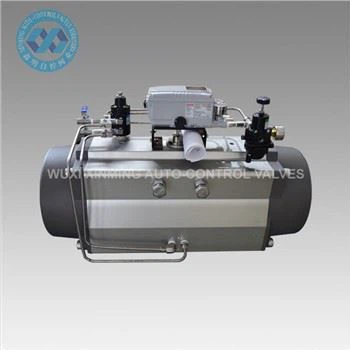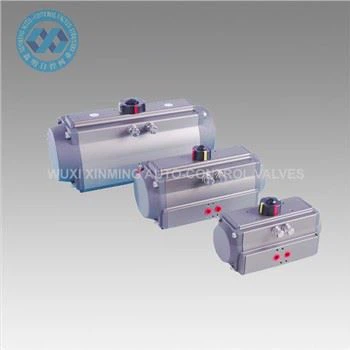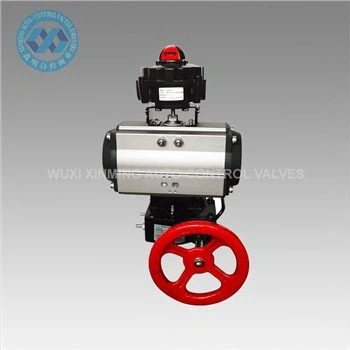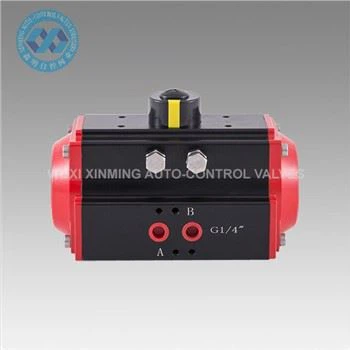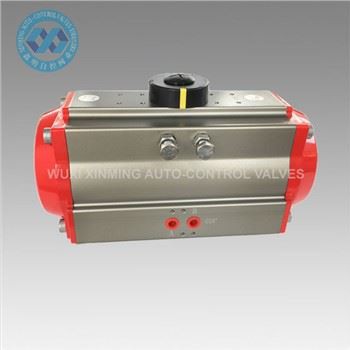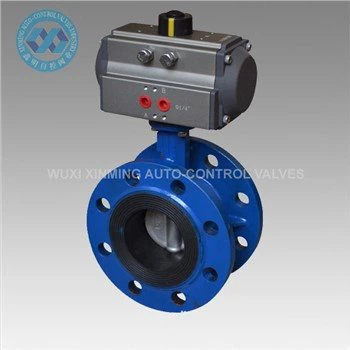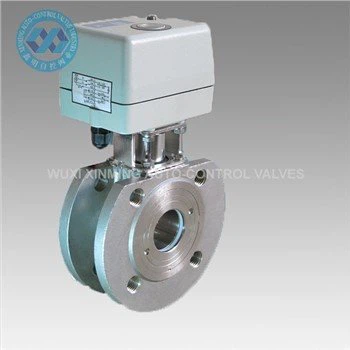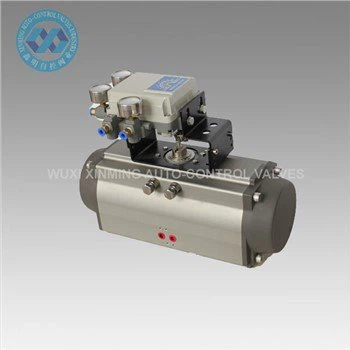Introduction
Pneumatic rack and pinion actuators are mechanical devices widely used in industrial automation to convert compressed air energy into rotary motion. These actuators are valued for their simplicity, reliability, and high torque output, making them ideal for valve automation, process control, and machinery requiring precise angular movement. This article explores the design principles, operational mechanics, advantages, and key applications of pneumatic rack and pinion actuators.
Working Principle
The actuator operates via a rack-and-pinion mechanism driven by pneumatic pressure. The system comprises two primary components:
- Rack: A linear gear bar that moves linearly under compressed air.
- Pinion: A circular gear mounted on a shaft, which meshes with the rack.
When compressed air is introduced into the actuator’s chambers, it pushes a piston connected to the rack. The linear motion of the rack rotates the pinion gear, converting linear force into torque. The direction of rotation is determined by the air supply port (clockwise or counterclockwise). A spring-return mechanism or dual air supply configuration allows for bidirectional control.
Design Features
- Compact Construction: The integration of rack and pinion within a single housing ensures space efficiency, suitable for installations with spatial constraints.
- High Torque-to-Size Ratio: Optimized gear meshing enables significant torque generation relative to the actuator’s physical dimensions.
- Durability: Components are typically constructed from hardened steel, aluminum, or stainless steel to withstand harsh environments, including corrosive or high-temperature settings.
- Fail-Safe Mechanisms: Options include spring-return designs for automatic position recovery during power loss, critical for safety-critical systems.
- Modularity: Accessories such as position indicators, solenoid valves, and manual overrides enhance adaptability to diverse operational needs.
Advantages Over Alternative Actuators
- Rapid Response: Pneumatic systems achieve faster actuation times compared to electric or hydraulic counterparts due to the compressibility and quick flow of air.
- Low Maintenance: Absence of complex internal components reduces wear and servicing requirements.
- Explosion-Proof: Compressed air eliminates fire or spark risks, making these actuators suitable for hazardous areas (ATEX/IECEx compliance).
- Cost-Effectiveness: Lower upfront and operational costs compared to electric actuators.
Industrial Applications
- Valve Automation: Widely used in ball, butterfly, and plug valves for oil and gas, chemical processing, and water treatment plants.
- Material Handling: Employed in conveyor systems, robotic arms, and assembly lines for precise part positioning.
- Packaging Machinery: Facilitates rapid opening/closing of molds or clamps in high-speed production environments.
- Pharmaceutical and Food Industries: Stainless steel variants meet hygiene standards for clean-in-place (CIP) processes.
Selection Criteria
Key factors for choosing a pneumatic rack and pinion actuator include:
- Torque Requirements: Calculated based on valve size, pressure differentials, and frictional forces.
- Operating Pressure: Standard units operate at 4–7 bar (60–100 psi), but custom designs accommodate higher pressures.
- Environmental Conditions: Material compatibility with temperature, humidity, and chemical exposure.
- Cycle Life: Manufacturers typically rate actuators for 1 million+ cycles under optimal conditions.
Maintenance Best Practices
- Regularly inspect seals and O-rings for wear.
- Lubricate gears and pistons with food-grade or synthetic grease as specified.
- Monitor air quality to prevent moisture or particulate contamination.
Future Trends
Advancements in smart pneumatics integrate IoT-enabled sensors for real-time torque monitoring, predictive maintenance, and energy efficiency optimization. Hybrid designs combining pneumatic and electric actuation are also emerging to leverage the benefits of both technologies.
Conclusion
Pneumatic rack and pinion actuators remain indispensable in industrial automation due to their robust performance, safety, and adaptability. As industries increasingly prioritize efficiency and connectivity, these actuators will continue evolving to meet the demands of modern smart manufacturing ecosystems.
If you want to learn more about low-priced products, please visit the following website: www.xm-valveactuator.com


